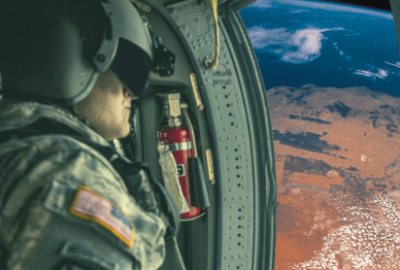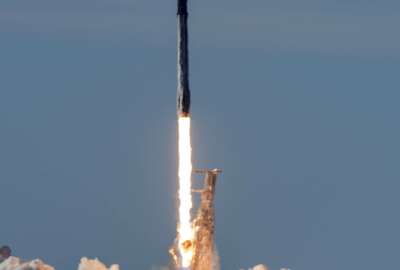
Space Command looks to its commercial partners to speed up innovation
If SPACECOM wants to get ahead of traditional DoD timelines, it will need help from commercial partners.
U.S. Space Command (SPACECOM) plans to speed up its timeline for combat readiness as it pushes for dominance in space against its rivals. While a typical timeline for new innovations in a Department of Defense command might easily exceed five years, SPACECOM’s commander sees an imperative in the current geopolitical climate. He want to speed up the process by enlisting help from the private sector.
“As a combatant commander, my outlook is about two to three years to fulfill my unified command plan to assign responsibilities because of the speed of competition with China and Russia. I cannot wait for new capabilities over the next five years,” said SPACECOM Commander U.S. Army General James Dickinson at a recent webinar hosted by the Mitchell Institute at the Air and Space Forces Association.
Accomplishing this goal means focusing on space domain awareness. SPACECOM needs to know what is present in the space battlefield, and then have the ability to relay data and turn it into information about what the objects are, if they are weapons, and what their capabilities are. As a joint command, SPACECOM represents elements from the Navy, Army, Air Force, Marines, and Space Force.
“We are doing this to provide operators with relevant data to inform tactical decisions at the speed of relevance and to enable joint force commanders to find, fix, track, engage and assess,” Dickinson said.
Dickinson wants more integration in the areas of space and missile defense and also joint and interagency multi-mission sensors. The most effective way to do that is by bringing commercial partners into the network. In order to integrate the sensors and satellite capabilities of military and commercial partners, SPACECOM needs to develop common methods of communicating and operating across different systems.
“First, we’re integrating space and missile defense sensors into one architecture. Second, we are integrating non-standard commercial sensors into one network,” said Dickinson.
Dickinson said his command currently works with 120 commercial firms. Ten of the commercial partners are located at Vandenberg Space Force Base in California. That group, the Commercial Integration Cell, focuses on working in tandem with military operators and exchanging information in real time.
The rest of the contractors are located in Colorado Springs, Colorado, with Dickinson’s command. That group works with their uniformed counterparts on space defense measures, primarily through the use of satellites.
“This information exchange ensures that our industry partners and our operators can rapidly and accurately respond to anomalies in orbit, share valuable lessons and improve our overall readiness,” Dickinson said.
The value of the public-private partnership became clear last January when SPACECOM was tracking a Chinese SJ-21 satellite while it performed a tugging operation, moving a BeiDou navigation satellite in a busy part of the geosynchronous orbit when the SJ-21 disappeared. Dickinson said one of the vendors was able to find the satellite and track it 300 kilometers above the orbit, and then track its return.
“It’s because a commercial company did this that I can talk about it without really revealing any type of classified information,” Dickinson said.
Dickinson said that type of partnership with the private sector is exactly how he views fast-tracking new capabilities.
“We’ve had to develop a new commercial integration strategy, so that we can work with these commercial partners that want to come and be part of our commercial integration cell out at Vandenberg,” he said.
As part of the focus on space domain awareness, Dickinson’s organization will move away from its duties as space traffic cop. Dickinson’s organization currently aids the Department of Commerce in space situational awareness, which is patrolling to check on where objects are to help avoid collisions. The command signed an agreement with the department to bring an eventual end to that partnership. The responsibility for tracking objects will remain with Commerce, while SPACECOM moves towards focusing exclusively on space domain awareness.
“The agreement will eventually relieve Space Command from what we call the non-defense related collision notifications. Currently, we notify any affected nation or commercial entity of debris that could pose a risk to their spacecraft, said Dickinson.
Copyright © 2024 Federal News Network. All rights reserved. This website is not intended for users located within the European Economic Area.
Alexandra Lohr, a former staff member, covered the Defense Department for Federal News Network until September 2023.





